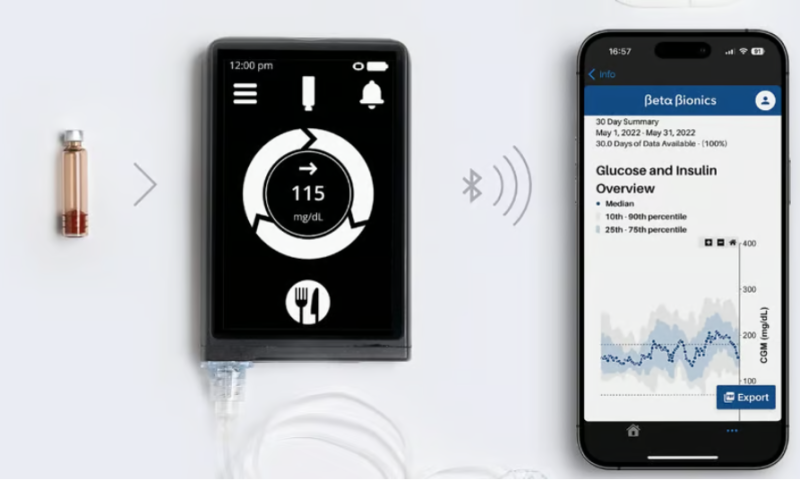Artificial pancreas systems synchronize an insulin pump and continuous glucose monitor with the goal of delivering an almost completely hands-off approach to diabetes management—and the newest one cleared by the FDA aims to make that goal even easier to achieve.
The regulator announced on Friday its clearance of Beta Bionics’ insulin pump and automated dosing software, which are designed to connect to a Dexcom G6 CGM to create what’s known as a hybrid closed-loop system, analyzing blood sugar readings from the CGM to automatically adjust the doses delivered by the insulin pump.
Unlike the software behind other artificial pancreases, Beta Bionics’ dosing algorithm requires only the user’s body weight to begin calculating insulin amounts—rather than asking for preset parameters from their doctors—and also simplifies the mealtime dosing process, replacing standard carbohydrate calculations with only a rough estimate of whether a user is about to consume a small, medium or large amount of carbs.
According to the FDA, those adjustments make Beta Bionics’ system not only an improvement over standard, non-algorithm-guided insulin pump therapy but also easier to set up than other currently available artificial pancreas systems.
“Today’s action will provide the Type 1 diabetes community with additional options and flexibilities for diabetes management and may help to broaden the reach of [automated insulin dosing] technology,” Jeff Shuren, M.D., director of the FDA’s Center for Devices and Radiological Health, said in the announcement.
In a release of Beta Bionics’ own on Monday, CEO Sean Saint said the iLet Bionic Pancreas will begin shipping “imminently.”
“As the first fully automated insulin dosing system, the iLet changes the paradigm of diabetes management,” Saint said. “By eliminating traditional setup, carb counting and manual correction boluses, the iLet has removed many of the traditional tasks for both the user and healthcare provider.”
The iLet Bionic Pancreas was cleared for use by people with Type 1 diabetes who are at least six years old.
Study results presented at the American Diabetes Association’s annual meeting last year showed that after 13 weeks, users of the iLet system had registered an average decrease of 0.5% in their blood sugar levels.
Users who started the study with especially high glucose readings were particularly helped by the technology: Those with baseline A1C levels over 9% were able to spend about 30% more time—or about 7.5 more hours per day—within an ideal glucose range while using the artificial pancreas.

